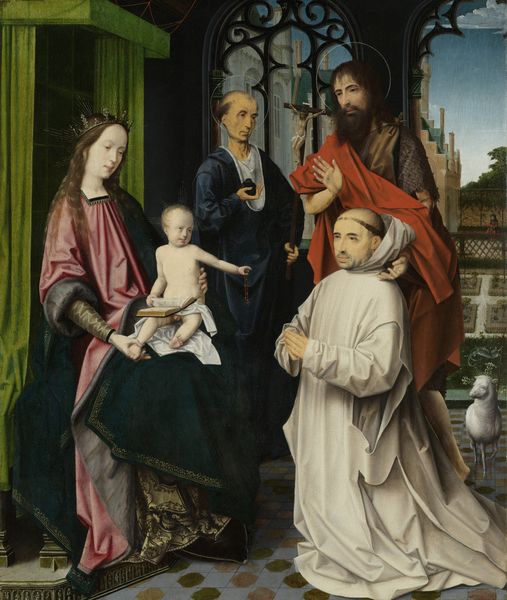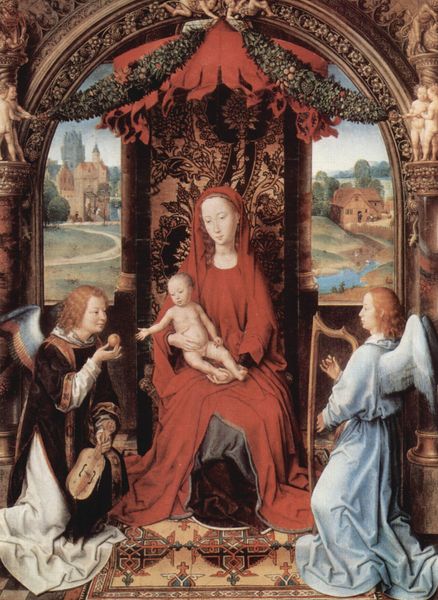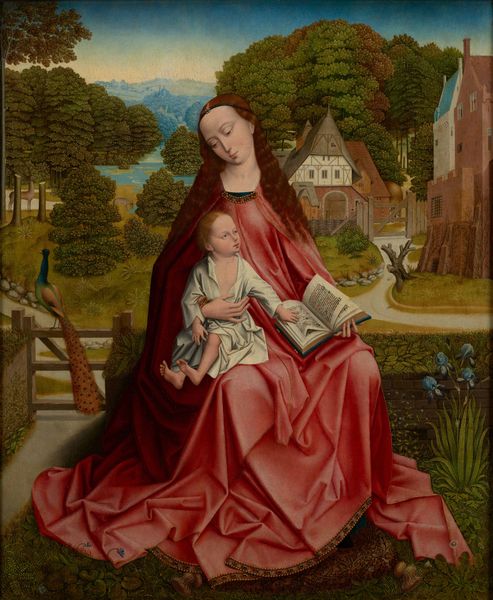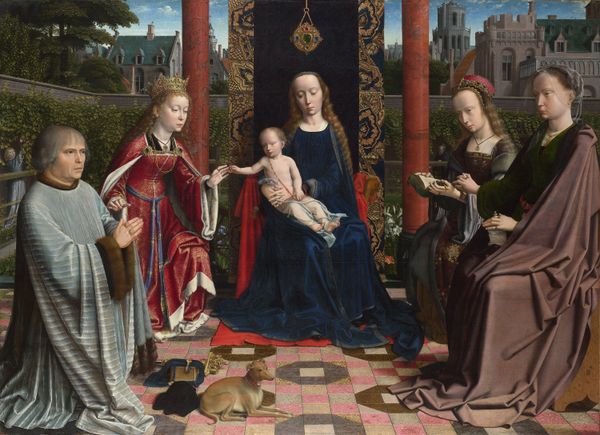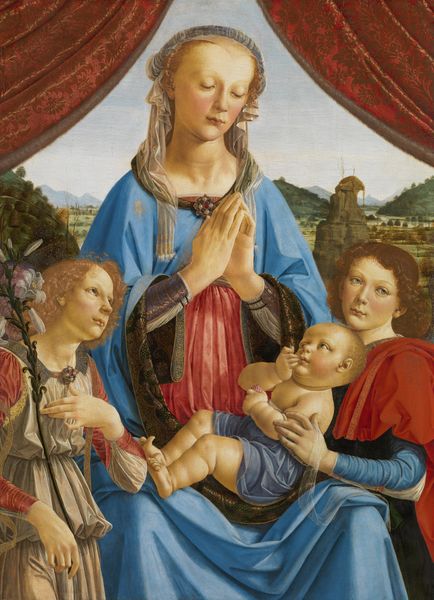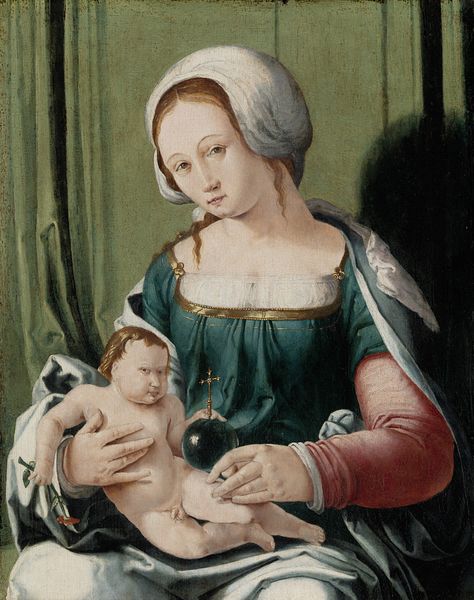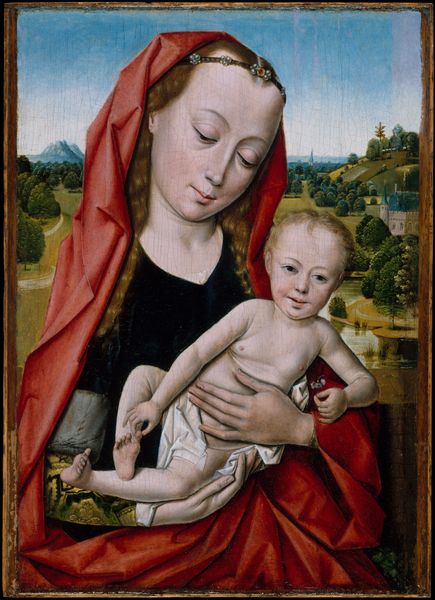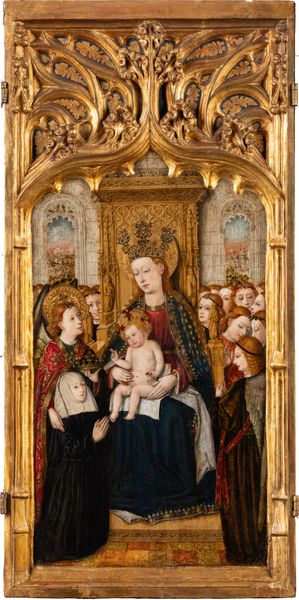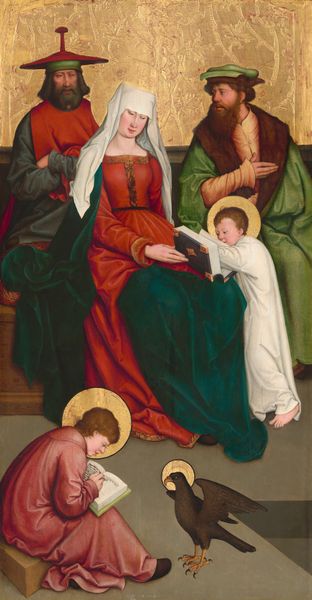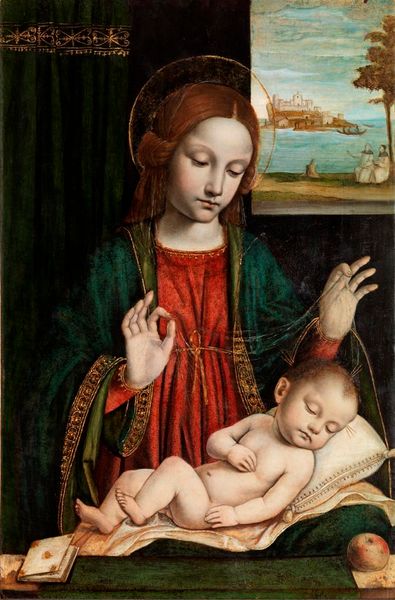
painting, oil-paint
#
portrait
#
allegory
#
painting
#
oil-paint
#
oil painting
#
history-painting
#
northern-renaissance
#
early-renaissance
#
miniature
Dimensions: 151.9 × 88.6 cm (59 13/16 × 34 7/8 in.) Painted surface: 150 × 86.8 cm (59 1/16 × 34 1/8 in.)
Copyright: Public Domain
Curator: The "Virgin and Child Crowned by Angels" from Colyn de Coter, made around 1490 to 1495, presents an interesting composition. Look at the opulent fabrics and precise detailing rendered in oil paint; the almost tactile quality of the Virgin's robes. Editor: My immediate reaction is one of almost overwhelming, well, *redness*. But beyond that, there's an undeniable feeling of hierarchical order, of ordained destiny. The figures are positioned so deliberately. Curator: Let’s consider the materials and their cost. Oil paint itself was still relatively new and allows for rich colors. Notice also the details in the gold trim of the robes and in the crown the angels are bestowing, the tiled floor and all that furniture: These materials signal wealth and power. De Coter’s use of oil paint speaks to experimentation with media, as he blended earlier Northern Renaissance techniques. Editor: Yes, and the redness contributes to that feeling of power – the colour is traditionally associated with royalty, with Christ's Passion. Placed in the historical context, the image emphasizes the Catholic church's pervasive impact on Northern Renaissance social life, solidifying prevailing ideals regarding maternity, devotion, and salvation. It uses visual language to subtly encourage a specific ethical conduct and political system. Curator: It’s fascinating how de Coter balances these incredibly rich details with a somewhat simplified approach to form. Note that we see strong contours delineating each figure; an emphasis on line rather than a gradual shading for volume, almost resembling applied craft methods. He likely was drawing from patterns. Editor: And perhaps mirroring those of marginalized groups who never made a space in official, dominant circles. You see how the angles, the sharp lines in those architectural details contrast against Mary's softer presentation; how the textures feel in competition instead of in unison. How can we not interpret those choices and patterns, beyond medium? Curator: You raise an interesting point. Viewing it from this perspective definitely enhances our appreciation. This adds depth to what could be perceived initially as just another historical religious scene. Editor: Precisely! I am reminded of how much this piece can engage in dialogue with current sociopolitical themes if we simply broaden our gaze to include the unheard narratives that permeate through de Coter's careful details.
Comments
No comments
Be the first to comment and join the conversation on the ultimate creative platform.

